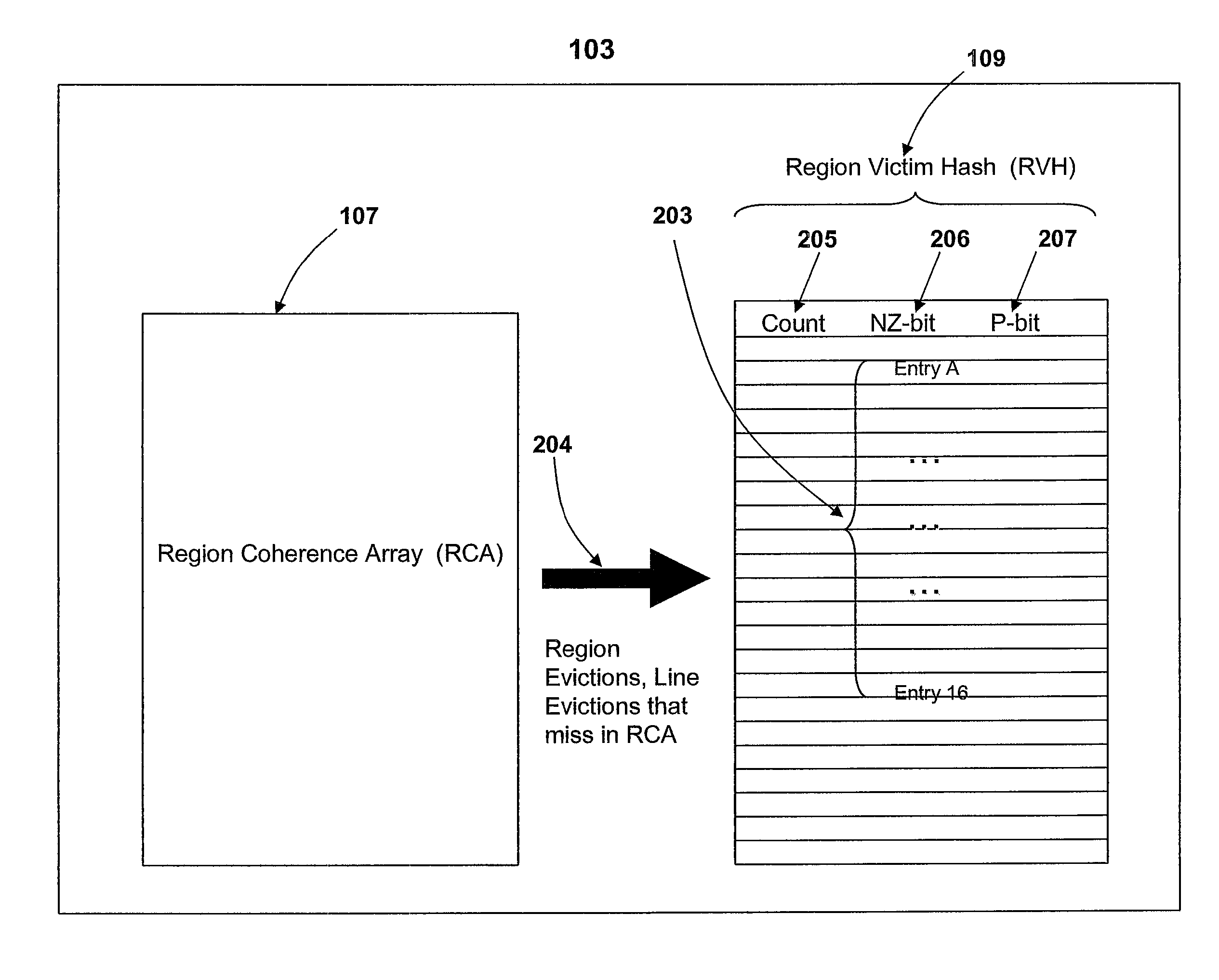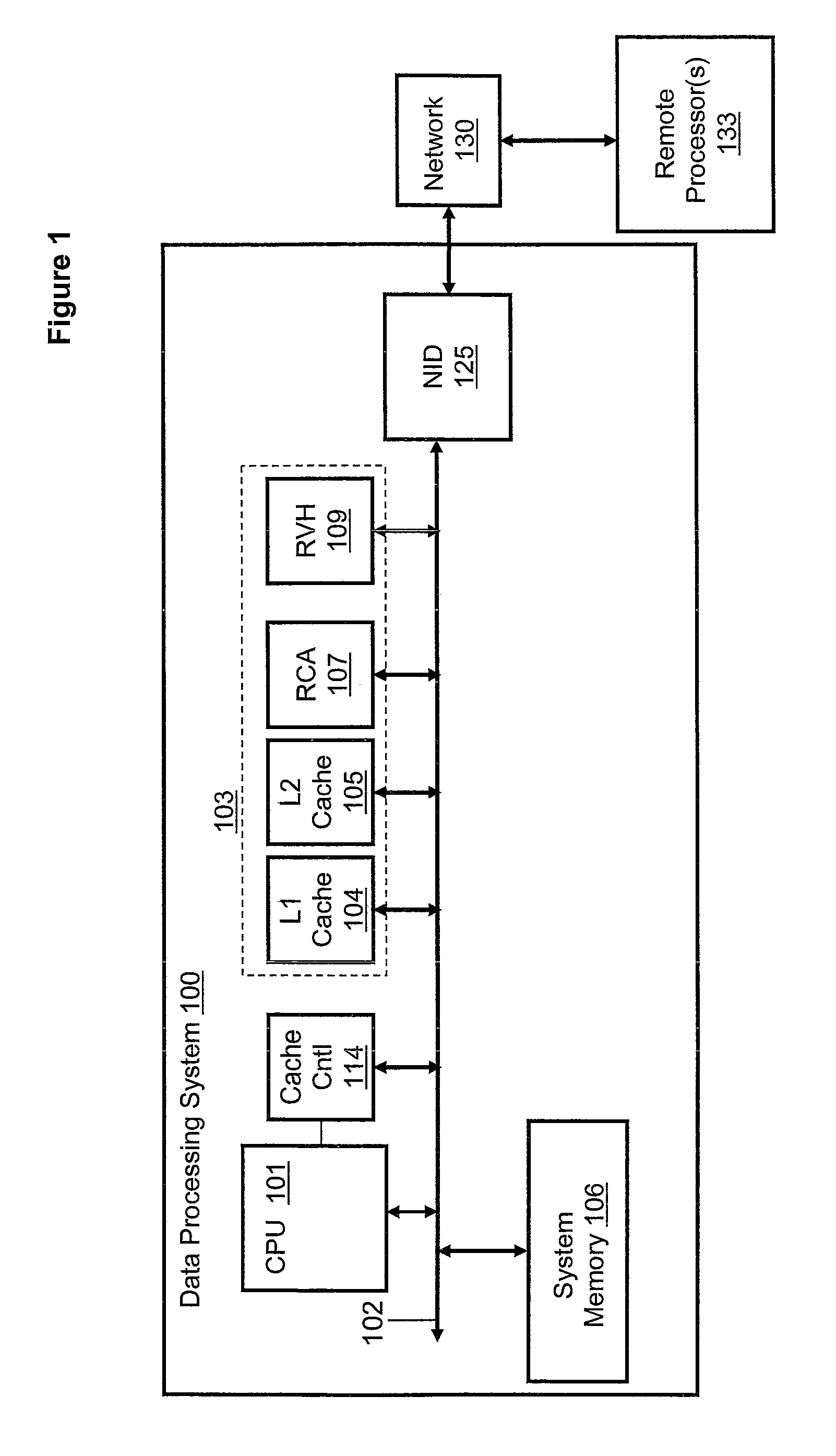Enhanced coherency tracking with implementation of region victim hash for region coherence arrays
a coherency array and victim technology, applied in the field of data processing systems, can solve the problems of affecting performance, requiring the occasional eviction of lines from the processor's cache hierarchy, and consuming more smp node bandwidth and power of the computer system,
- Summary
- Abstract
- Description
- Claims
- Application Information
AI Technical Summary
Benefits of technology
Problems solved by technology
Method used
Image
Examples
Embodiment Construction
[0008]Disclosed are a method and system for precisely tracking lines evicted from a region coherence array (RCA) without requiring eviction of the lines from a processor's cache hierarchy. The RCA is a set-associative array which contains region entries consisting of a region address tag, a set of bits for the region coherence state, and a line-count for tracking the number of region lines cached by the processor. Tracking of the RCA is facilitated by a non-tagged hash table of counts represented by a Region Victim Hash (RVH). When a region is evicted from the RCA, and lines from the evicted region still reside in the processor's caches (i.e., the region's line-count is non-zero), the RCA line-count is added to the corresponding RVH count. The RVH count is decremented by the value of the region line count following a subsequent processor cache eviction / invalidation of the region previously evicted from the RCA.
[0009]The above as well as additional objectives, features, and advantage...
PUM
 Login to View More
Login to View More Abstract
Description
Claims
Application Information
 Login to View More
Login to View More - R&D
- Intellectual Property
- Life Sciences
- Materials
- Tech Scout
- Unparalleled Data Quality
- Higher Quality Content
- 60% Fewer Hallucinations
Browse by: Latest US Patents, China's latest patents, Technical Efficacy Thesaurus, Application Domain, Technology Topic, Popular Technical Reports.
© 2025 PatSnap. All rights reserved.Legal|Privacy policy|Modern Slavery Act Transparency Statement|Sitemap|About US| Contact US: help@patsnap.com



